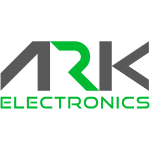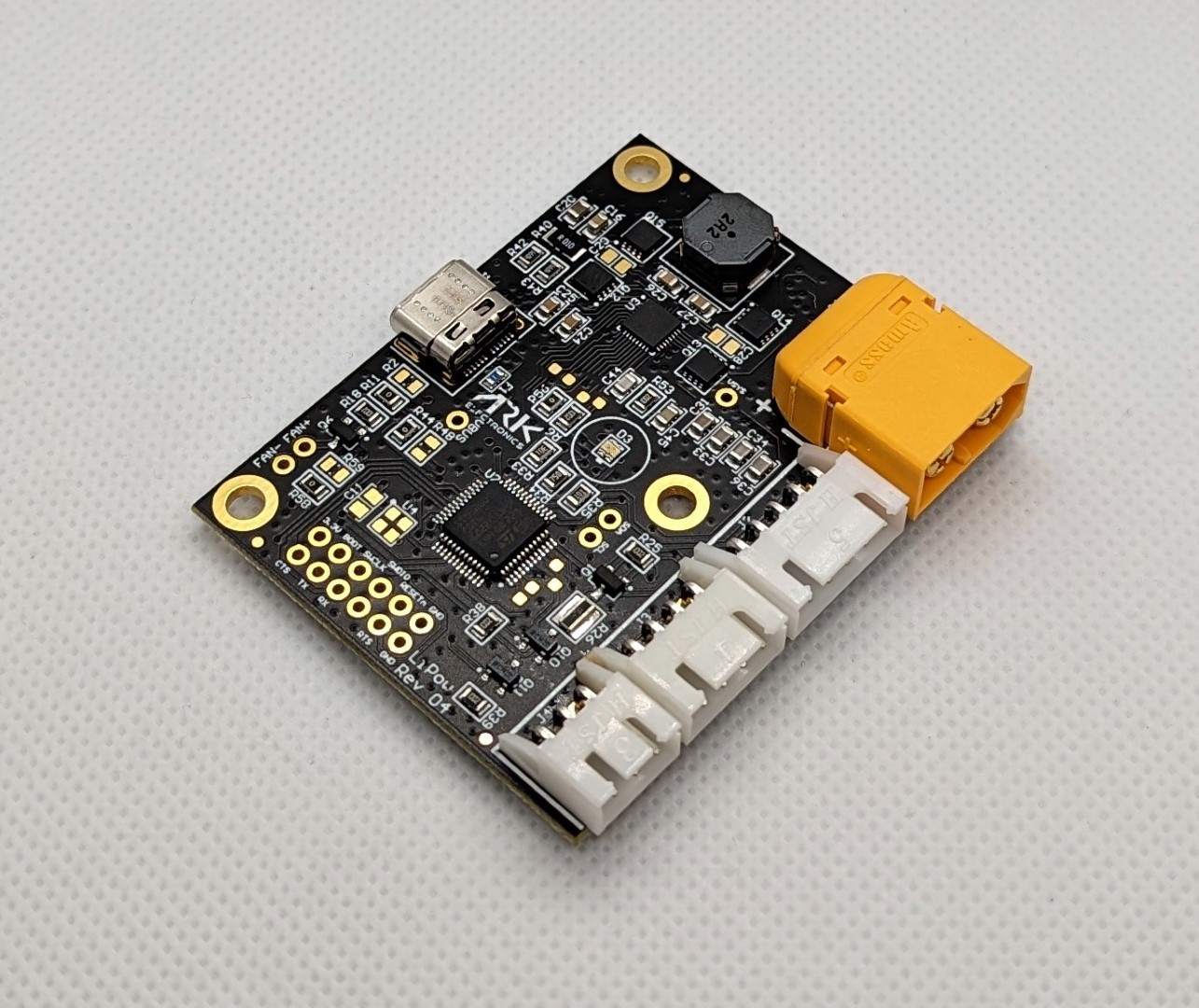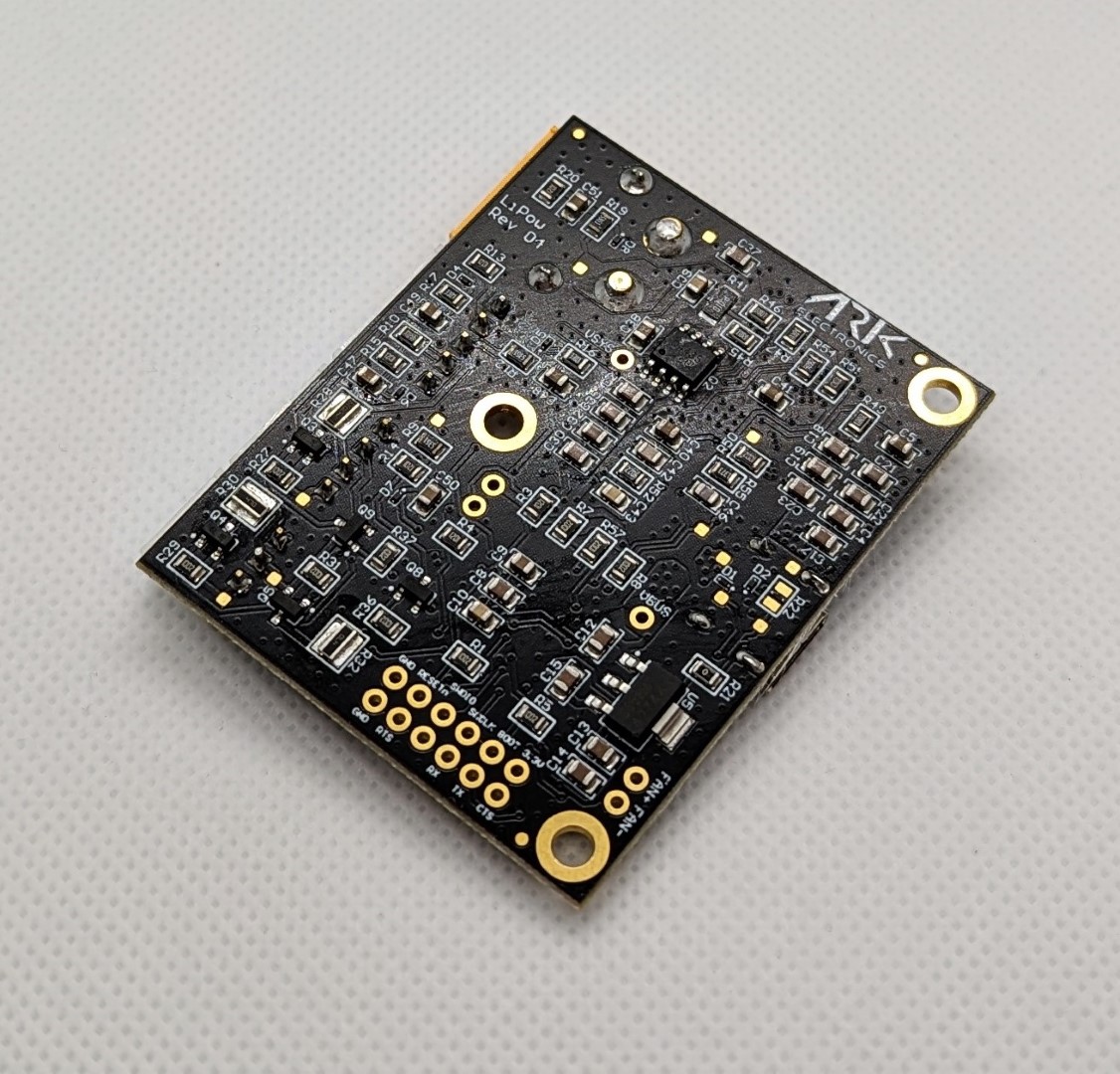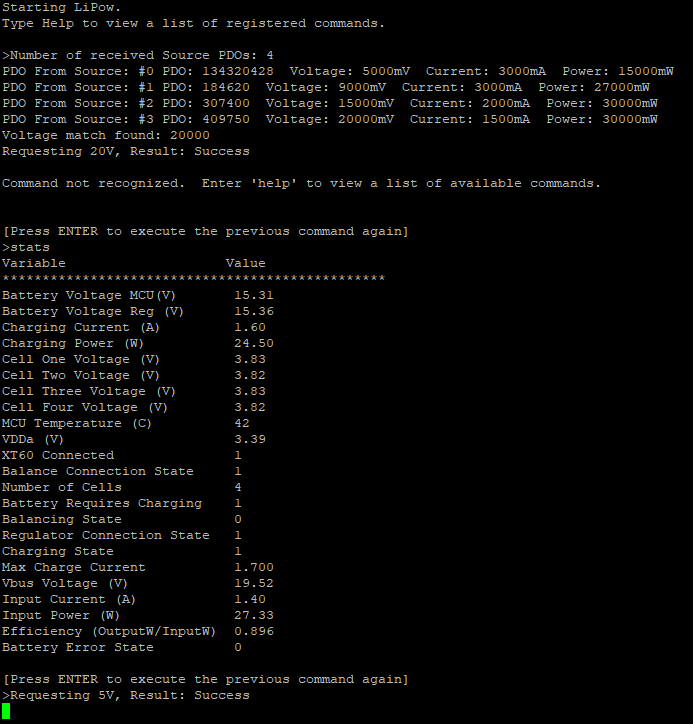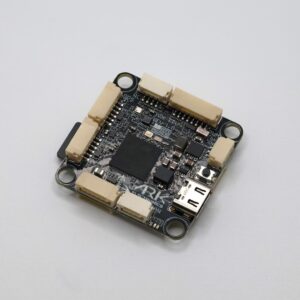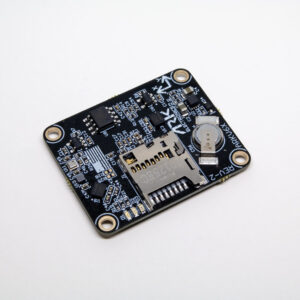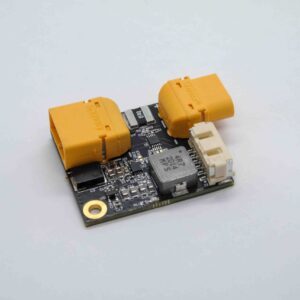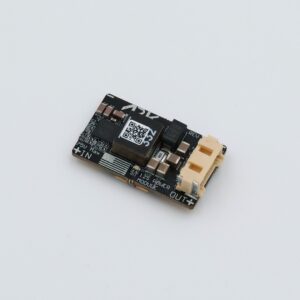Description
LiPow Features
- Now made in the USA
- Charges and balances 2s-4s packs
USB type C input - Supports charging up to 100W (depending on case configuration) from USB PD power supplies or any other USB C port with PD source capability (such as a Thinkpad X1 laptop)
- Supports non USB PD power supplies (limited to 2.5W – 5V, 0.5A)
Charging is done through an XT60 connector and has JST XH connectors for balancing 2s-4s packs - User feedback through an RGB LED
- Open source schematic, BOM, and firmware
- SWD and UART breakouts for firmware development
- UART command line interface for debugging and run time information
Ordering Information
- No case, PCBA only (Can continuously sustain 40W charging at 20C ambient)
3D printed case fully enclosed (Can continuously sustain 40W charging at 20C ambient) - 3D printed case with debug header exposed (Can continuously sustain 40W charging at 20C ambient)
- 3D printed case with fan (Can continuously sustain 100W charging at 20C ambient)
User Guide
- Plug into any USB C power supply/wall wart/device that supports power output
- Plug in the balance plug from your 2s-4s battery
- If the LED turns blue, the battery needs balancing and balancing is active
- If the LED turns green, the battery is balanced
- Now plug in the XT60 plug from your battery
- If the LED turns red, the battery needs charging and charging is active
- If the LED turns green, the battery is charged and balanced
- Balancing and charging can be active at the same time and both the red and blue LEDs will be on (purple/violet)
- Charging will only start when both the balance and XT60 plugs are connected
- If a damaged pack is attached, charging will stop if any cell rises above 4.21V
- If any cell is below 3.0V it will not balance
- If any cell is below 2.0V it will not charge
Everything runs automatically and will charge up to the max capability of the connected USB PD power supply if the max current output limit exceeds the input power supply. Lower current limits can be programmed as well.
Charging current is decided by the USB PD Source capability. First, it checks the available voltages from the source, then selects the voltage that will result in the highest efficiency for the regulator based on the number of cells. For instance, using a 30W supply with a 20V 1.5A (30W) capability and a 4s Lipo battery at 15.0V. The charging current will be 30W/15.0V=2A. As the battery voltage increases, the max charging current will decrease. 30W/16.0V=1.875A.
Case
- Three different 3D printed cases are available. One fully enclosed for everyday use, one with an opening for programming and debug connections, and one with an integrated fan.
- STLs are available for 3D printing your own case.
- Onshape case source file available here
Hardware Specifications
- STM32G071CBT6 microcontroller with built in USB PD Phy
- BQ25703ARSNR programmable regulator (could be used as programmable power supply in future)
- IFX25001MEV33HTSA1 3.3V regulator supporting up to 45V input
- USB Type C connector power input
- XT60 connector for charging
- JST XH connectors (3, 4, and 5 pin) for balancing and pack cell count detection
Tested with these USB PD Supplies
- Aukey Omnia 100W USB C Charger
- Aukey PA-Y8 27W Turbo Charger
- Lenovo Thinkpad 65W Charger
- Lenovo Thinkpad X1 Carbon USB C Port
- Anker PowerPort Atom PD 1 30W
- Nintendo Switch Power Supply
- Generic 2.5W USB A Wall Wart
